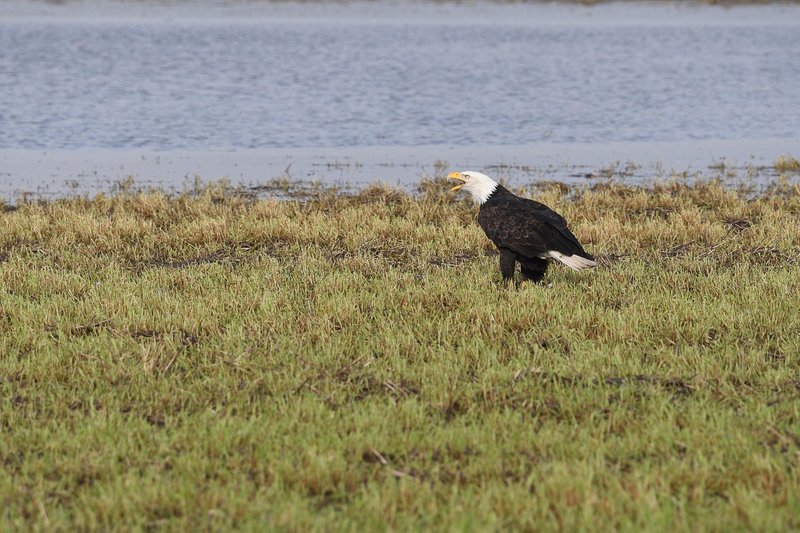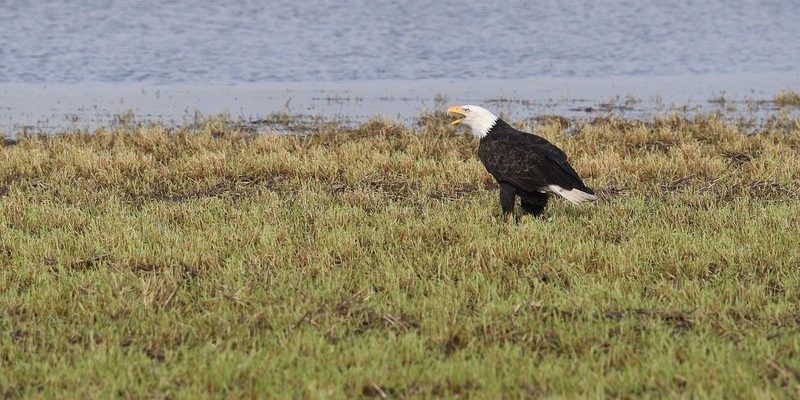
It’s kind of like comparing apples to oranges: both are fruit, but each has its unique flavor and characteristics. In the case of eagles, they belong to a family of birds known as *Accipitridae*, which includes hawks, kites, and vultures. Each of these birds has its distinct traits, hunting tactics, and habitats. Let’s dive into what sets eagles apart from these feathered fellows, and you’ll see that the differences are more fascinating than you might expect.
Defining Characteristics of Eagles
Eagles are often called the kings of the sky, and for good reason. These birds have several defining features that help distinguish them from similar species. For starters, their wingspan is impressive, often stretching up to 7.5 feet depending on the species. This large wingspan helps them soar effortlessly on thermal updrafts, conserving energy while scanning for prey.
Another standout feature is their hooked beak, which is uniquely designed for tearing flesh. Unlike other birds that might have straighter beaks, an eagle’s beak curves downwards, making it easier to snatch and consume their favorite meals, which usually include fish, small mammals, and other birds. You might be wondering how their eyesight plays a role in their hunting strategy. Eagles have incredible vision, allowing them to spot prey from miles away, which is truly a game-changer when hunting.
Comparing Eagles and Hawks
Now, let’s talk about hawks, which are often confused with eagles. While both belong to the same family, there are key differences. Hawks tend to be smaller than eagles, with a wingspan ranging from about 3 to 4 feet. Their hunting style is quite different as well. Hawks are known for their agility and speed when flying, which makes them excellent at catching smaller, faster prey.
One big difference here is in their focus. While eagles often hunt large fish or mammals, hawks may chase down smaller birds or rodents. Another notable feature is their tail feathers; hawks have long, broad tails that aid in maneuvering through trees and tight spaces. This agility gives them a different edge in their hunting grounds. If you ever get a chance to watch them hunt, you’ll quickly see the distinct styles between these two impressive birds.
Understanding Kites and Their Comparison
Next up are kites—another bird that often gets compared to eagles. Kites are generally smaller than eagles and hawks, with a wingspan of about 2 to 4 feet. One of the most remarkable features of kites is their lightweight build, which allows them to glide effortlessly and use less energy while flying. They often have long, forked tails that provide excellent control as they maneuver through the air.
Kites primarily feed on insects and small animals, so their hunting techniques differ as well. They are known for their ability to soar for long periods, scanning for food while covering vast areas. Unlike eagles, who dive toward their prey at high speeds, kites usually catch their meals in a more leisurely manner, gliding gracefully overhead. This difference in hunting style is a key factor in understanding their unique adaptations.
The Role of Vultures in the Ecosystem
You might be surprised to find vultures in a discussion about eagles, but they are actually quite relevant. Vultures belong to the same family as eagles, sharing some characteristics but differing greatly in behavior and diet. These birds are often seen soaring high in the sky, similar to eagles, but their purpose is quite different.
Vultures are scavengers; they primarily feed on dead animals rather than hunting live prey. This unique role in the ecosystem is essential, as vultures help clean up the environment and prevent the spread of disease. Their bald heads are an interesting adaptation; it keeps them clean while feeding on carrion, which can be messy business.
Despite these differences, both eagles and vultures share the ability to soar with grace, but their outlook on life, literally and figuratively, is where they part ways.
How Habitat Influences Bird Behavior
You might think that eagles, hawks, kites, and vultures would all live in the same kind of habitat, right? Not quite. Habitat plays a huge role in shaping these birds’ behavior and survival strategies. Eagles tend to prefer open areas near water bodies, like lakes and rivers, where they can hunt for fish. Their nests are often built high in trees or cliffs, offering protection and a strategic view of their surroundings.
In contrast, hawks can thrive in various environments, from forests to grasslands. They often build their nests in the tree canopies or on cliff edges. Kites are more prevalent in open fields or grasslands, where they can easily spot insects and small animals. Vultures, meanwhile, are commonly found in arid or hilly regions, soaring on thermals while searching for carrion.
The differences in habitat preferences are critical to how each bird lives and thrives, showcasing the diversity of the avian world.
Summary of Key Differences
It’s fascinating to see how different bird species can share family ties while having their unique quirks. Here’s a quick breakdown to sum it all up:
| Bird Type | Wingspan | Diet | Habitat | Hunting Style |
|---|---|---|---|---|
| Eagles | Up to 7.5 ft | Fish, mammals | Near water, high cliffs | High-speed dives |
| Hawks | 3 to 4 ft | Small birds, rodents | Forests, grasslands | Agile, quick |
| Kites | 2 to 4 ft | Insects, small animals | Open fields | Glide-watching |
| Vultures | Up to 6 ft | Scavengers (carrion) | Arid, hilly regions | Soaring |
By understanding these distinctions, we can appreciate not just the incredible eagles we see but also the whole community of birds they share the sky with.
Final Thoughts on Eagles and Their Feathered Friends
So, the next time you spot an eagle soaring high above, take a moment to think about all the fascinating differences between it and similar bird species. Each of these birds plays a vital role in the ecosystem, contributing to the balance of nature in their unique ways. Whether it’s the swift hawk, the soaring kite, or the cleaning vulture, they all add to the beauty and complexity of our world.
Remember, every bird has its own story and adaptations that help it thrive. So, next time you go for a walk in nature or simply gaze at the sky, keep an eye out for these magnificent creatures. Each can teach us something new about the natural world and the importance of keeping our ecosystems balanced.

